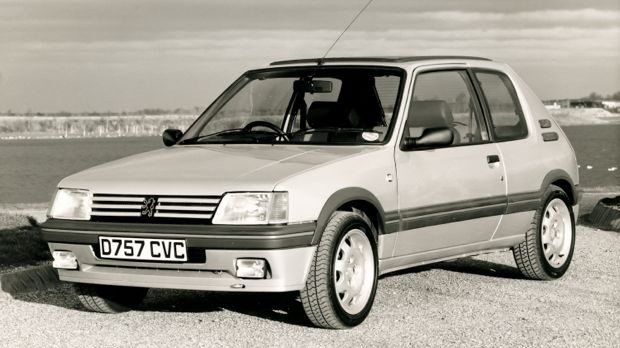In a year that saw the Space Shuttle Challenger make its maiden flight, the automotive world celebrated the introduction of a significant vehicle on 15 February 1983 – the Peugeot 205.
The origins of the 205 can be traced back to the company’s takeover of Chrysler and Talbot, and with the economic recession in full swing, Peugeot needed a new model to slot in between its ageing 104 model and the larger 304. Peugeot’s 201 design conveniently ushered in the 2-Series cars the first of which logically became the ‘201’, the fifth iteration that evolved in 1978 was known as the M24, or 205.
Design for the new 205 was between two competitors, in the one corner was a new in-house team, Peugeot Styling, led by Gérald Welter, while in the opposite corner was the might of the renowned Pininfarina studios.

The design contest, launched in 1977 by Jean-Paul Parayre (Chairman of the Managing Board of PSA), required the winning vehicle to carry five people while being both compact (3.7m long) and comfortable, and to fit between the 104 and 304 models. The new model had to embrace modern technology, be light, aerodynamic and able to carry a range of different engines in a simple cradle up front.
So flexible was the little Peugeot, that across the range it was powered by engines ranging from 954cc to 1,905cc with fuel feed by carburettor, fuel injection, turbo, non-turbo, and in both petrol or diesel versions.
Welter’s team won the contest hands down but Pininfarina was later given the task of designing the 205 Cabriolet (1986). Interior design was the work of Paul Bracq, whose 2-Series family designs had strong brand identity. When viewed from the side (on 3-door models) a large painted panel in the shape of a ‘triangle’ (that can be found in all Peugeot cars) exists at the rear with its three sides being the rear of the body, the car’s visual waistline and the back edge of the rear quarterlight.
To make this more visually appealing, Peugeot Styling created a trim element for this area, the ‘soap dish’, that housed the GTi and cc (1.6, 1.9 or special edition name) badges. A distinctive and clean three-bar grille, ‘the lion’s moustaches’ or whiskers, appeared either side of the central corporate badge on the grill. The M24 was undoubtedly a success for the new Peugeot Styling group, but importantly it utilised new computer-aided design tools for both the drawing and the model, as well as in the design of body structures and mechanical elements.
Initial production, which commenced in January 1983, was planned for 800 cars per day but once the Mulhouse plant came online this increased to 1,000 units which doubled a year later.
By the end of 1985, daily production was up at 2,350 units which saw assembly spread to plants at Poissy, Sochaux, Villaverde (Spain) and even at Citroën (Aulnay) and Chausson (Creil). The following year the 205 accounted for 56% of all of Peugeot’s sales but importantly, half of these were conquest sales.
The model on every enthusiast’s lips is the 205 GTi (1987), a car that took on the mighty Golf GTi in the heyday of the ‘pocket rockets’. In competition, the 205 Turbo 16 was hugely successful amassing no fewer than sixteen WRC victories around the world between 1984-1986.
In the UK, the promotional campaign, ‘The Lion goes from Strength to Strength’ (evolving the key aspect of the Lion brand’s USP), saw the model gain much popularity. With only a few key competitors (Ford Fiesta, Austin Metro, Vauxhall Nova, Renault 5, Volkswagen Golf) Peugeot was especially well-placed to deliver success. Shortly after its launch, the 205 was narrowly beaten to the European Car of the Year by the Fiat Uno, but the 205 was easy to like and well promoted with cheeky advertising which saw it wrack up sales of almost 5.3-million between 1983-1998, with around 400,000 being sold in the UK alone.
Images courtesy of Virtual Motorpix

